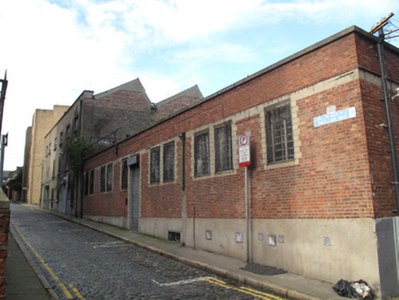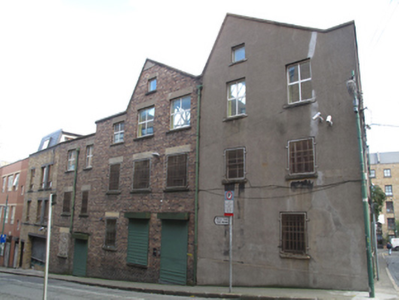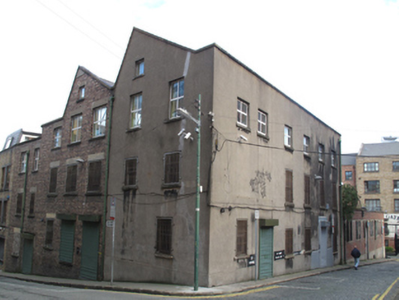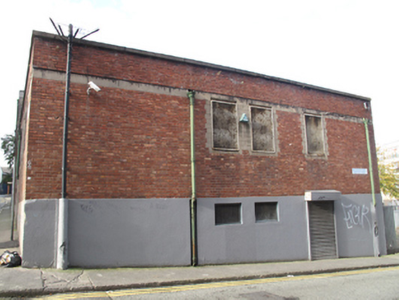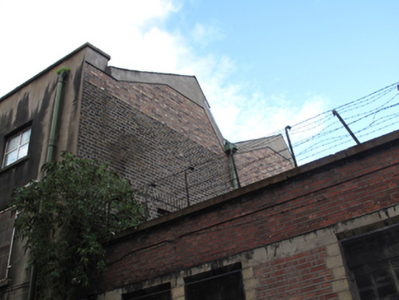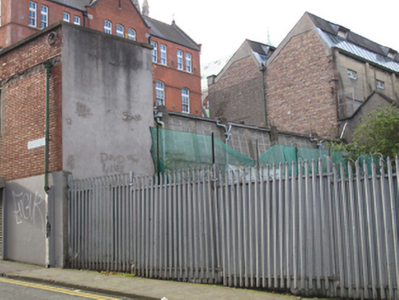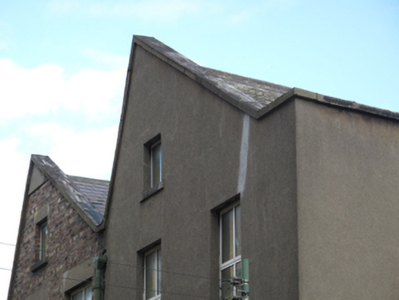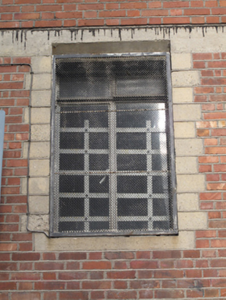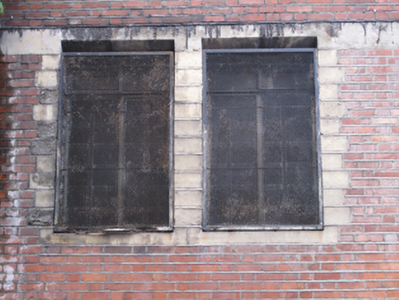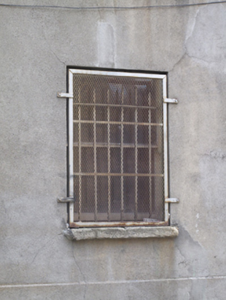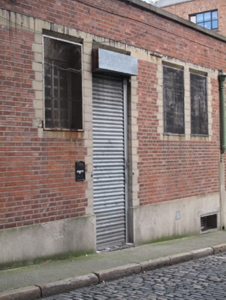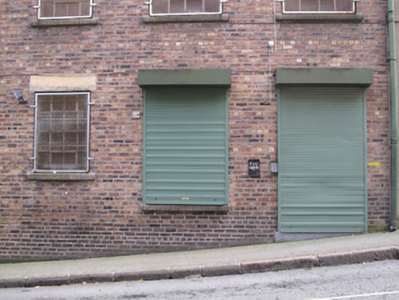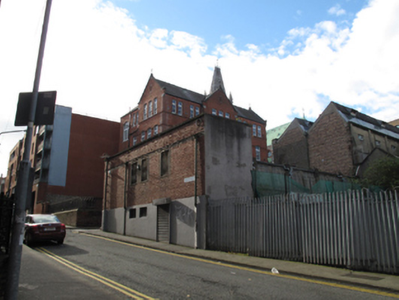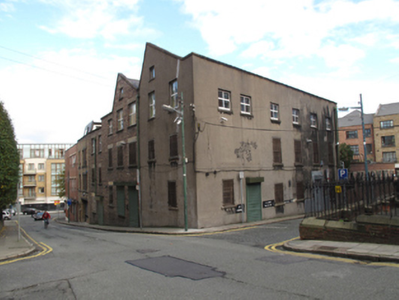Survey Data
Reg No
50080562
Rating
Regional
Categories of Special Interest
Architectural, Social, Technical
Previous Name
Ferrier, Pollock & Co.
Original Use
Factory
Date
1915 - 1925
Coordinates
314786, 233967
Date Recorded
04/11/2013
Date Updated
--/--/--
Description
Attached six-bay three-storey former factory, built c.1920, possibly incorporating earlier fabric, extended c.1925, having split-level one- and two-storey extension to east and lower three-bay three-storey extension to north. Saw-tooth tiled and glazed roof, flat roofs to extensions. Cast-iron rainwater goods, granite coping to parapet. Rendered wall to front and rear (north) elevation, brown brick, laid in English garden wall bond, to west elevation, and laid in Flemish bond to east elevation. Red brick, laid in Flemish bond, to single-storey extension to east, render plinth course to east extension. Square-headed window openings throughout, render sills, mixed timber sash windows and replacement uPVC windows, some having steel grilles, some with steel roller shutters. Rendered lintels to windows to west elevation, continuous concrete lintel to window openings to east extension. Square-headed window openings occupying upper half of wall to north elevation of extension. Square-headed door openings with steel roller shutters.
Appraisal
This large industrial building retains much of its early twentieth-century design and character, with a saw-tooth roof allowing even northern light to the interior and adding characteristic industrial interest to the site. Its specialised design is indicative of its industrial function, with a range of finishes and later additions signifying the continued growth and development of the factory, and extra structures added to accommodate growing needs. It appears to have been built by Ferrier Pollock & Co, a wholesale textile firm, as a shirt factory, and extended before 1926, to designs by Edwin Bradbury. Some timber sash windows are retained, lending a patina of age to the structure. It would have provided significant employment in the local area, making it socially significant. It makes a strong contribution to the social and historical fabric of the area.

